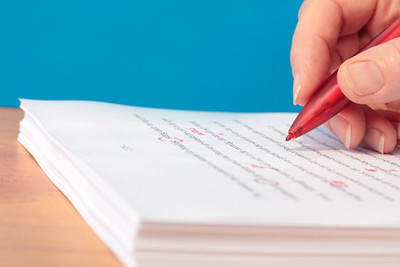20 Tips to Help You Proofread Like a Pro
Posted: May 29, 2012
[caption id="attachment_10166" align="alignright" width="400"] © Pixsooz - Fotolia.com[/caption]As a writer, or any professional communicator, proofreading your work one step that is critical to your image. Whether you have been editing for years or are a newbie, the following tips can improve your skills.
© Pixsooz - Fotolia.com[/caption]As a writer, or any professional communicator, proofreading your work one step that is critical to your image. Whether you have been editing for years or are a newbie, the following tips can improve your skills.
[caption id="attachment_10166" align="alignright" width="400"] © Pixsooz - Fotolia.com[/caption]As a writer, or any professional communicator, proofreading your work one step that is critical to your image. Whether you have been editing for years or are a newbie, the following tips can improve your skills.
© Pixsooz - Fotolia.com[/caption]As a writer, or any professional communicator, proofreading your work one step that is critical to your image. Whether you have been editing for years or are a newbie, the following tips can improve your skills.
1. Always double-space your documents. It makes reading and proofreading easier because you can write above and below the sentences.
2. Never rely on screen reading and software-assisted grammar checkers to proofread or copyedit your documents. Remember that grammar and spell checkers don’t catch homophones (words that sound the same but have different meanings and spellings: e.g., hear and here) or words with letters that typists frequently transpose, such as form and from.
For error-free results use electronic tools and print a hard copy of your document—no matter how many pages. To save money, recycle your printer paper by turning over the sheets and reusing them for subsequent revisions. Don’t scrimp by skipping this step.
3. Get some rest. Unless you are a teacher or professional accustomed to grading or proofreading, chances are you’ll work best after a good night’s rest or when you’ve given your eyes and mind a break from the document. In a perfect world this respite can last a day to several weeks. The author’s eyes and mind often fill in words that are not on the page because of familiarity with the work. You know what you’re saying, but it’s easy to miss obvious breaks in logic or continuity unless you take a rest. Sometimes logic breaks are illuminated during the proofreading phase as you encounter an awkward phrase or clumsy usage.
4. Use a red pen or one that isn’t close in color to the text for marking up errors. Changes should be clearly written and easy to understand. Professional proofreader’s marks can be found online, or you can simply circle the error and write the correction next to it or above it.
5. Read aloud as you follow along with a red pen. Or do a separate reading out loud after you read silently with the pen. Say each word slowly and carefully, and be sure to read the punctuation marks, too. Although reading aloud may seem tedious, it’s a great way to catch mistakes and missing words that the eye glosses over. It also gives you the opportunity to reconsider poor or lumbering word choices. If you’re an author, it’s great practice for when you’ll be reading in front of audiences.
6. Be sure to check and double-check proper nouns for capitalization and spelling. Keep a list of proper names, places and dates that you’ve already fact-checked so you don’t have to repeat this process each time you proofread.
7. Take a break between steps.
8. Total any numbers, equations or calculations to make sure they work. Make sure graphics are correctly oriented and that captions match the images they tag.
Read the remaining 20 tips to help you proofread like a pro.